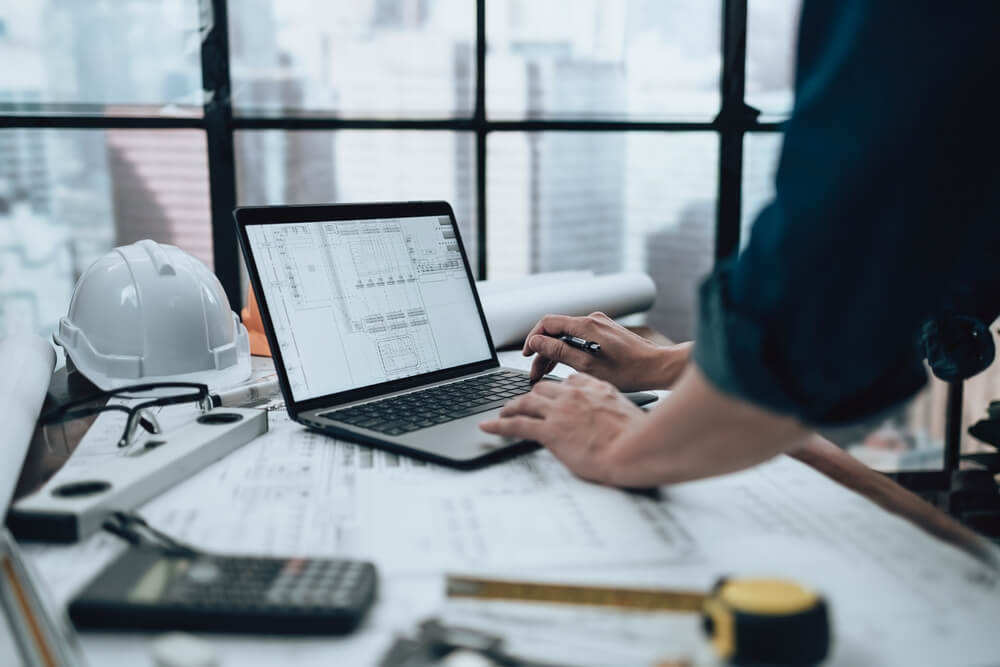As an architect, your laptop is more than just a tool; it’s a portal to your creative world. It’s essential to have a machine that not only keeps up with your ideas but also brings them to life with efficiency and precision. In this blog, we’ll explore the key functionalities that architects should look for in the right laptop, ensuring that the chosen device meets the unique demands of architectural design and rendering.

1. High-Performance Processor
Architectural software, like AutoCAD, Revit, and 3D Max, demands a lot from a processor. A high-performance CPU ensures smooth operation of complex modeling and rendering tasks, preventing lag and boosting productivity. This powerful processor is key for achieving the best performance in architectural tasks.
What to Look For:
- Intel Core i7 or i9, or AMD Ryzen 7 or 9 series.
- Multi-core processors with high clock speeds for multitasking and running demanding applications.
2. Superior Graphics Capabilities
Architects rely heavily on visual representation through 3D modeling. A dedicated graphics card is crucial for rendering high-quality images and handling graphic-intensive tasks without stuttering or delays.
What to Look For:
- NVIDIA GeForce RTX or Quadro series.
- High VRAM (Video RAM) capacity for better rendering of detailed architectural designs and 3D modeling capabilities.
3. Ample RAM
RAM (Random Access Memory) is vital for multitasking and running memory-intensive applications. More RAM means a more powerful laptop that can handle more tasks simultaneously without slowing down.
What to Look For:
- Minimum of 16GB RAM; 32GB or more is ideal for more complex projects.
- Fast memory speeds to enhance overall system responsiveness.
4. SSD Storage for Speed
Solid State Drives (SSDs) offer faster data access speeds compared to traditional HDDs. This speed is crucial for quickly opening large files and reducing boot times, providing ample storage for your projects.
What to Look For:
- At least 512GB SSD; 1TB or more for storing large files.
- NVMe SSDs for even faster data transfer speeds.
5. Quality Display
A high-resolution display is essential for architects to see the finer details of their designs. Color accuracy is also crucial for realistic renderings. A laptop with a high-resolution display and larger screen will allow you to see your designs in great detail. A laptop with a high-quality display will also help reduce eye strain, making it easier to work for extended periods of time. Additionally, a laptop with an anti-glare display will make it easier to work in a variety of lighting conditions.
What to Look For:
- Minimum Full HD (1920 x 1080) resolution; 4K resolution is preferable.
- IPS technology for wide viewing angles and better color reproduction on a larger screen.
6. Robust Build and Portability
As an architect, you may need to work on-site or present projects to clients. A durable and portable laptop is essential for on-the-go work. Look for laptops with a solid build quality, such as aluminum or magnesium alloy chassis. Many laptops also come with a spill-resistant keyboard, which is great for architects who may need to work outdoors or in less-than-ideal conditions. Additionally, look for laptops with a good balance between portability and performance. You may want to consider a laptop that is lightweight and thin, but still has the power to handle the tasks you need it to do.
What to Look For:
- Lightweight and slim design for easy portability.
- Sturdy build quality to withstand the rigors of travel.
7. Long Battery Life
Long battery life ensures that you can work for extended periods without being tethered to a power outlet, which is especially important for fieldwork.
What to Look For:
- A laptop with at least 8 hours of battery life.
- Fast charging capabilities are a bonus.
8. Connectivity Options
A variety of ports will allow you to connect to multiple external devices like monitors, drawing tablets, and data storage devices without needing additional adapters.
What to Look For:
- Multiple USB ports, HDMI, Thunderbolt 3 or 4.
- SD card reader and Wi-Fi 6 for faster data transfer.
Why Renting a Laptop Makes Sense for Architects
For architects, especially architecture students or those working on short-term projects, renting a laptop can be a cost-effective and flexible solution. It allows you to access the latest technology, like the Dell XPS with its powerful processor and superior display, without the hefty upfront cost. Renting also offers the opportunity to test different laptops to find the one that offers the best performance for your specific architectural needs. Additionally, rental services often include support and maintenance, ensuring you have a reliable machine equipped with the right operating system and specifications for your architectural tasks.

Conclusion
Choosing the best laptop is a critical decision for any architect. It should be a blend of power, performance, and portability while also being able to support the necessary architecture software. While the best laptop might vary based on individual needs and budget, prioritizing these functionalities will help you find a machine that won’t just meet your requirements but exceed your expectations. Remember, in the world of architecture, your laptop is your companion in bringing visions to reality. Choose wisely!
Recommended Laptops for Architects :
- MacBook Pro 16-inch : For Apple enthusiasts, known for its performance and display quality.
- Dell Alienware X17 i9 RTX 3080 : A powerful laptop, this is a great all-rounder with excellent display and processing power.
Desktops and Workstations: Whilst some architects are on the move, the powerful processors of the workstations are ideal for 3D modelling.
- ASUS ROG Pro Gaming Laptop: Similar to the Asus Zenbook Pro Duo, a powerhouse for multitasking with top-tier gaming and architectural capabilities.
Each of these models embodies the essential features needed for architectural work, ensuring that your creativity is never hindered by technological limitations.








